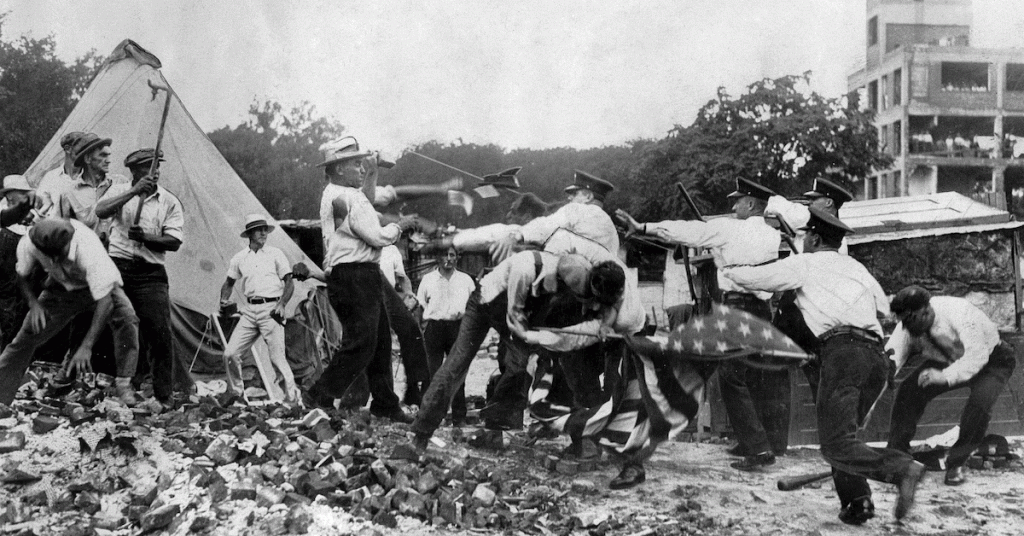On May 29, 1932, Washington D.C. was flooded with members of the The Bonus Expeditionary Force, also known as the Bonus Army.
Their mission? Demanding early payment of “The World War Adjusted Compensation Act,” a benefit approved by Congress for their service in World War I. The bill issued service certificates to veterans to be paid in 1945.

But three years into the Great Depression, thousands of veterans were unemployed. They, along with their families, began making their way towards Washington D.C. to ask the government to pay out their compensation early. Few were trickling in by May 23 but the big influx began on May 29 when hundreds of men arrived by train to widespread press coverage.
Retired World War I Brigadier General and Superintendent of Police Pelham D. Glassford permitted the veterans to camp on open ground and in vacant government buildings, allowing them to quickly organize into a peaceful and mostly legal occupation.
The movement grew to 20,000 veterans in the following months before the bill was eventually debated and defeated in Congress. President Herbert Hoover ordered the military to clear out the veterans’ camps which erupted into violence on July 28. Military regiments commanded by General Douglas MacArthur and Maj. George S. Patton charged the veteran demonstrators with cavalry, fixed bayonets, and tear gas.
Four years later, Congress with Democrats holding majorities in both houses, finally authorized the immediate payment of the $2 billion in World War I bonuses.


